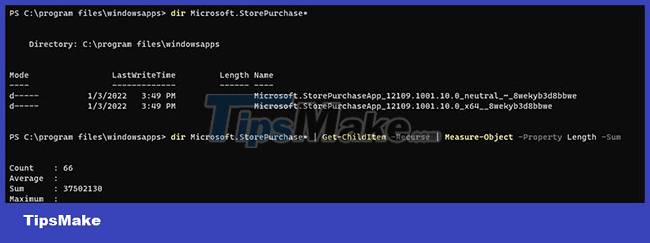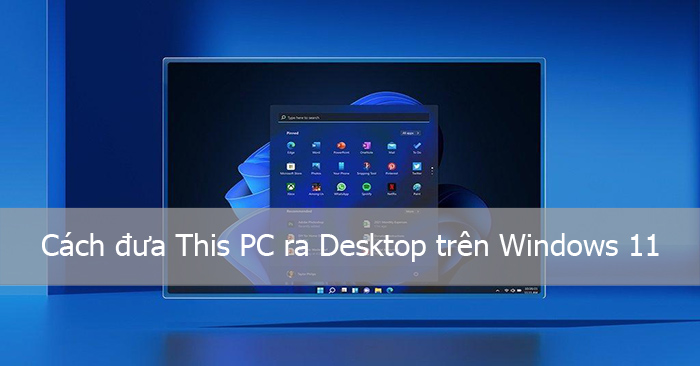This is the amount of space that default Windows 11 applications are taking up on your PC
There is no denying that these are mostly useful applications, but in some situations, they can also bring a lot of trouble to users, such as taking up system storage space.
If this is the situation you're in, you're most likely wondering how much storage space these pre-installed apps take up on your PC. A new report from Oofhours sheds some light on this question.
Through a few PowerShell tricks, Oofhours engineers figured out the size of default Windows 11 apps. As can be seen in the screenshot below, the apps are sorted in descending order of size (in bytes). In which, Microsoft Teams is the largest application when it takes up 91MB of storage space.

However, anomalies have been recorded when some applications such as Microsoft Store Purchase are confusingly lightweight, only 11kB. Several other studies have been done to clarify this issue. The results show that there seem to be two separate folders for this application, and if combined, the actual total size of this application is about 37MB.

Of course, this is not the case only with Microsoft Store Purchase. After reviewing and summarizing, the Oofhours team has come to the conclusion that Windows 11's default applications are taking up about 1.6GB of storage space on the system.

To be fair, this is not a large number for modern PC systems, but also not small for those who rarely or never use these applications.
If you want to check the size of all installed apps on your Windows PC via PowerShell (including default apps and apps downloaded from Microsoft Store), you can simply launch PowerShell using use the script below:
Get-AppxProvisionedPackage -online | % { # Get the main app package location using the manifest $loc = Split-Path ( [Environment]::ExpandEnvironmentVariables($_.InstallLocation) ) -ParentIf ((Split-Path $loc -Leaf) -ieq 'AppxMetadata' ) { $loc = Split-Path $loc -Parent } # Get a pattern for finding related folders $matching = Join-Path -Path (Split-Path $loc -Parent) -ChildPath "$($_.DisplayName)*" $size = (Get-ChildItem $matching -Recurse -ErrorAction Ignore | Measure-Object -Property Length -Sum).Sum # Add the results to the output $_ | Add-Member -NotePropertyName Size -NotePropertyValue $size $_ | Add-Member -NotePropertyName InstallFolder -NotePropertyValue $loc $_ } | Select DisplayName, PackageName, Version, InstallFolder, Size Note that the "WindowsApps" folder is usually hidden by default, so you should unhide it first.
You should read it
- Bloatware list can be uninstalled or safely deleted from Android device synthesized by Androidsage
- How to quickly remove Bloatware from Windows 11
- Remove all Bloatware apps on Samsung Galaxy S7 and S7 Edge
- How to install PowerShell 7.0 in Windows 10/8/7
- How to use PowerShell's default parameter to change the command behavior
- The latest Windows 10 version allows users to delete preinstalled applications on the OS
- What to do when Windows can't find PowerShell?
- Instructions on how to use PowerShell in Windows Server 2012
- How are Command Prompt (cmd) and PowerShell different?
- AdwCleaner 7.4 was officially launched, adding the ability to remove bloatware from Windows
- How to Install or Update PowerShell on Windows 11
- Use PowerShell to download any file on Windows 10
May be interested

How to increase security on windows 11

Instructions on how to bring This PC to Desktop on Windows 11

Powershell Windows Toolbox helps to install Google Play on Windows 11 is malicious code

How to check CPU usage in Windows 11

10 interesting hidden features of Windows 11

These are the features that are about to be brought to Windows 11 by Microsoft






 How to see what is taking up a lot of storage space on Windows 10
How to see what is taking up a lot of storage space on Windows 10 How to delete default applications on Windows 10
How to delete default applications on Windows 10 Trick to remove the default application on Windows 10
Trick to remove the default application on Windows 10 Microsoft will not notify you of the amount of memory required to install Windows 10 updates
Microsoft will not notify you of the amount of memory required to install Windows 10 updates Fixed a bug that could not change the default application or browser on Windows 10
Fixed a bug that could not change the default application or browser on Windows 10 Free up storage space on your Android device with just 1 tap
Free up storage space on your Android device with just 1 tap